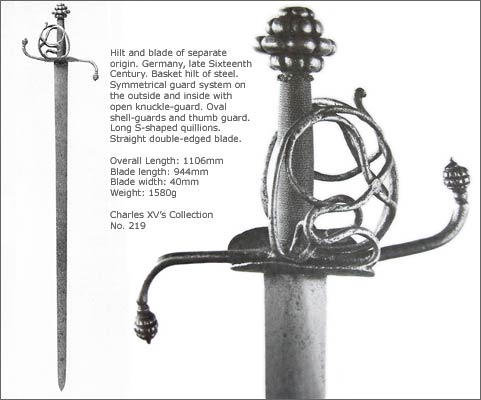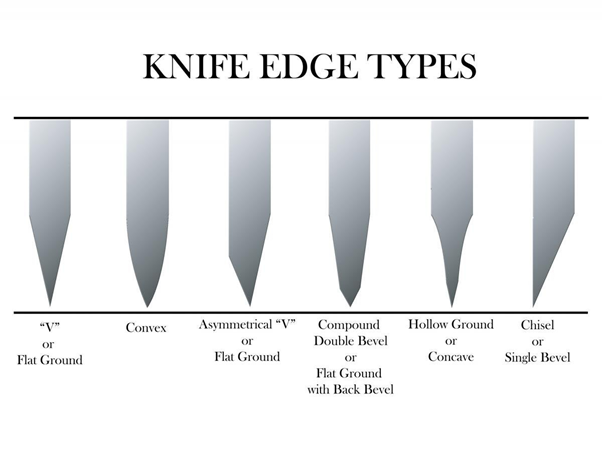
Compared to hexagonal or fullered blades they weigh more and are apparently not as good at cutting. Purely lenticular swords however were used, were in some places more common than the alternatives, and they were used by both rich and poor people alike, so they cannot only have been a budget alternative. What then are the pros of having a blade be entirely lenticular?
 Attachment: 27.23 KB
Attachment: 27.23 KB


I dont know, but I would guess it is the same principle as with knives.
Of course you could put a hollow grind on every knife because it makes it lighter and it also cuts better.
But you will end up with a very fragile edge.
When doing a convex grind on the other hand, you have a very strong and taff edge, that will survive clashes with steel and bones without big damage, while sacrificing some of the cutting ability.
I think it is the same consideration with swords...they choose a lenticular cross section in order make the edge stronger.
This theorie seems quite viable to me, especially considering that lenticular cross sections are mostly found on older types of swords (13th century and older) probably because the steel production hasnt been as optimsed as for example in the 16th century, which resulted in a softer steel and therefore in the need of a thicker edge to compensate for that.
This is of course also true for the entire pre-industrialization era because their steel wasnt very good.
Furthermore this type of cross section is very often seen on cutting oriented blades which would be used to hack into the opponent and therefore would have to resist much more stress and impact force, which again requires a stronger edge.
I could very well be wrong, but thats my theorie.
Of course you could put a hollow grind on every knife because it makes it lighter and it also cuts better.
But you will end up with a very fragile edge.
When doing a convex grind on the other hand, you have a very strong and taff edge, that will survive clashes with steel and bones without big damage, while sacrificing some of the cutting ability.
I think it is the same consideration with swords...they choose a lenticular cross section in order make the edge stronger.
This theorie seems quite viable to me, especially considering that lenticular cross sections are mostly found on older types of swords (13th century and older) probably because the steel production hasnt been as optimsed as for example in the 16th century, which resulted in a softer steel and therefore in the need of a thicker edge to compensate for that.
This is of course also true for the entire pre-industrialization era because their steel wasnt very good.
Furthermore this type of cross section is very often seen on cutting oriented blades which would be used to hack into the opponent and therefore would have to resist much more stress and impact force, which again requires a stronger edge.
I could very well be wrong, but thats my theorie.
But you can have the same "edge geometry" with lenticular, lenticular fullered, hexagonal blade, diamond... Basically any blade, even hollow ground to a certain extent. By edge geometry I mean the first couple of millimetres. Blade cross section after that of course influences how the blade behaves, but sturdiness of the edge itself is mainly a thing of narrow portion of the blade.
I'd say it's more of a price thing. Complex shapes are harder to make than simple lenticular blades.
I'd say it's more of a price thing. Complex shapes are harder to make than simple lenticular blades.
| Blaz Berlec wrote: |
| But you can have the same "edge geometry" with lenticular, lenticular fullered, hexagonal blade, diamond... Basically any blade, even hollow ground to a certain extent. By edge geometry I mean the first couple of millimetres. Blade cross section after that of course influences how the blade behaves, but sturdiness of the edge itself is mainly a thing of narrow portion of the blade.
I'd say it's more of a price thing. Complex shapes are harder to make than simple lenticular blades. |
Well, not really. On a hollow ground blade the first few millimetres (so the edge itself) is very thin and has a very fine angle to it.
On a convex or lenticular grind the very edge remains fairly thick and has a very steep angle.
The thinner the primary grind is, the flatter the edge angel gets, which results in a very sharp but also vulnerable edge.
The thicker the primary grind it, the steeper gets the angle of the edge itself, which results in a thick and strong edge.
I have done some crude illustration on Paint in order to explain what I mean.

[ Download ]
[ Download ]
More mass, obviously, than the fullered version. So less maneuverable and potentially lower velocity in the cut, which counts as much or more than mass in the cut. However, if you are strong enough to achieve the same velocity, it will hit with more power.
I think it has something to do with simpler tooling and a simpler skill set, especially earlier on the timeline. For instance we know the two basic tools they were using on a blank were a grinding wheels and something like a strop mounted to a frame that looked a lot like a violin bow. Producing a blade with a lenticular cross section with these implements is simple and straighforward, adding a fuller is another step but doesn't require any additional tooling. To create a diamond section you could try the side of the grinding wheel or introduce a kind of platen to the strop-tool and you could do a hex with this same setup, multiple fullers can be done in a few ways but will require additional tooling and so on.
Generally, that added mass can help with moving the weapon. You see this all the time with forward-weighted weapons. Certain movements, i.e. sturtzhaus and some thrusts related to them are easier with more blade mass, as the weapon wants to move on its own.
The added mass also makes the weapon stiffer than the other cross sections, but not per unit mass, only per unit in terms of dimensions. If you need a thinner, heavier and stiffer blade, both hex and lenticular give good results, and they can be made to function roughly interchangeably. Small variations in grind quality are less evident on lenticular blades, compared to hexagonal blades.
Secondly, lenticular doesn't mean thicker, it just means lens-shaped. You can have very thin lenticular blades, and the edge angle isn't nearly so steep as shown in the drawing, nor is it significantly different from a diamond or hex section, especially if the dimensions of the spine are kept the same for all three.
Additionally, added mass doesn't help weapon bind sensitivity, but it does increase passive weapon bind presence, which can be a desirable thing once sensitivity is sufficiently achieved (which is entirely in the opinion of the practitioner).
Iron age spearheads of all lengths across Europe (and the rest of the world!) show all kinds of hollow ground or strongly ridged with complex bevels, designed to achieve the desired weight and balance of stiffness and thickness. Lenticular blades are generally not a functioning of tool limitations. They're an intended design, based on the sweet spot of desired characteristics.
The added mass also makes the weapon stiffer than the other cross sections, but not per unit mass, only per unit in terms of dimensions. If you need a thinner, heavier and stiffer blade, both hex and lenticular give good results, and they can be made to function roughly interchangeably. Small variations in grind quality are less evident on lenticular blades, compared to hexagonal blades.
Secondly, lenticular doesn't mean thicker, it just means lens-shaped. You can have very thin lenticular blades, and the edge angle isn't nearly so steep as shown in the drawing, nor is it significantly different from a diamond or hex section, especially if the dimensions of the spine are kept the same for all three.
Additionally, added mass doesn't help weapon bind sensitivity, but it does increase passive weapon bind presence, which can be a desirable thing once sensitivity is sufficiently achieved (which is entirely in the opinion of the practitioner).
Iron age spearheads of all lengths across Europe (and the rest of the world!) show all kinds of hollow ground or strongly ridged with complex bevels, designed to achieve the desired weight and balance of stiffness and thickness. Lenticular blades are generally not a functioning of tool limitations. They're an intended design, based on the sweet spot of desired characteristics.
Page 1 of 1
You cannot post new topics in this forumYou cannot reply to topics in this forum
You cannot edit your posts in this forum
You cannot delete your posts in this forum
You cannot vote in polls in this forum
You cannot attach files in this forum
You can download files in this forum
All contents © Copyright 2003-2006 myArmoury.com — All rights reserved
Discussion forums powered by phpBB © The phpBB Group
Switch to the Full-featured Version of the forum
Discussion forums powered by phpBB © The phpBB Group
Switch to the Full-featured Version of the forum